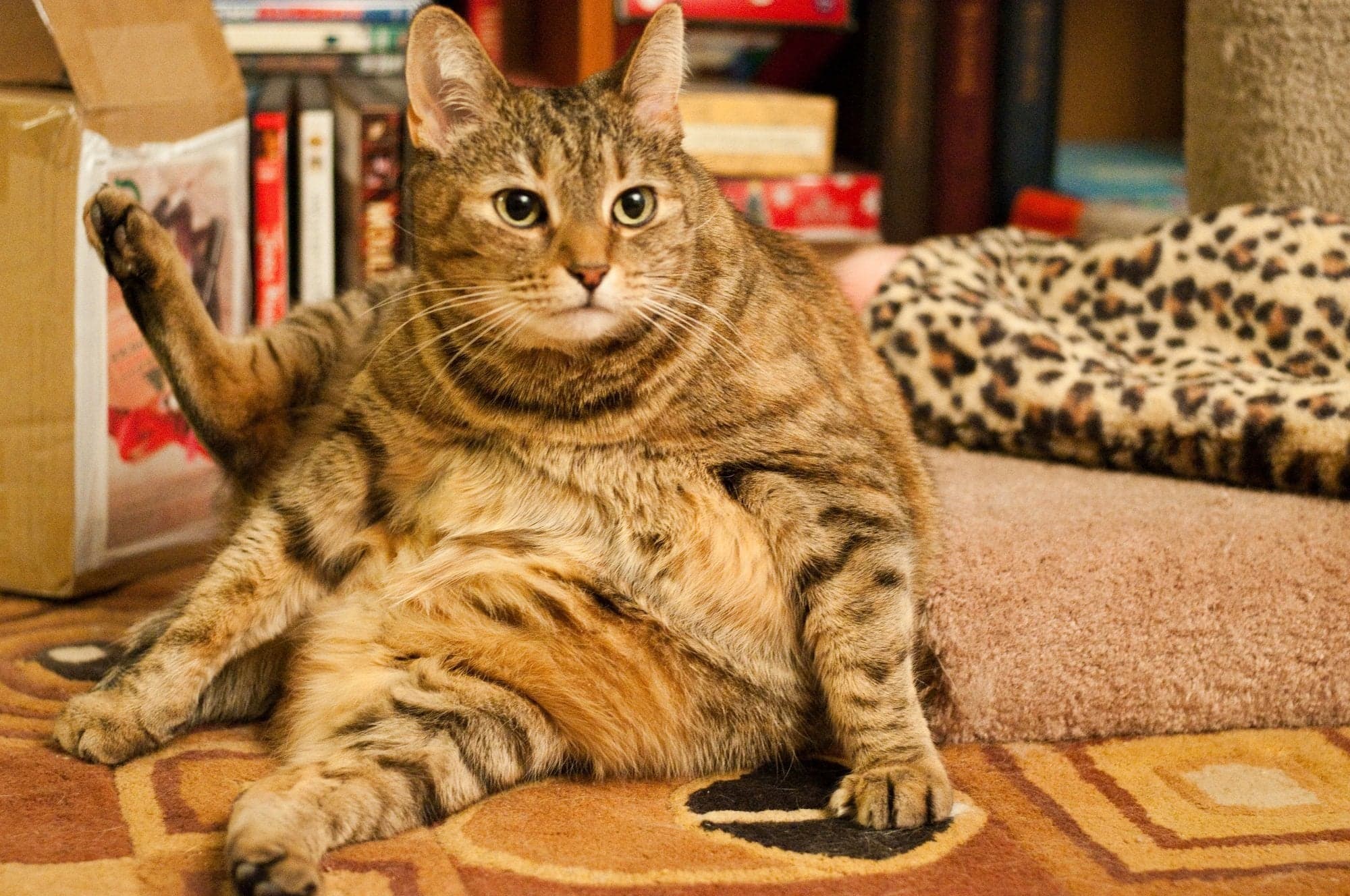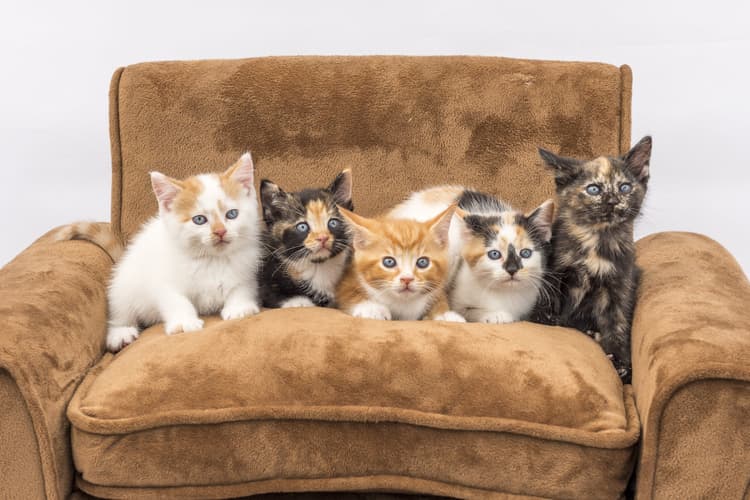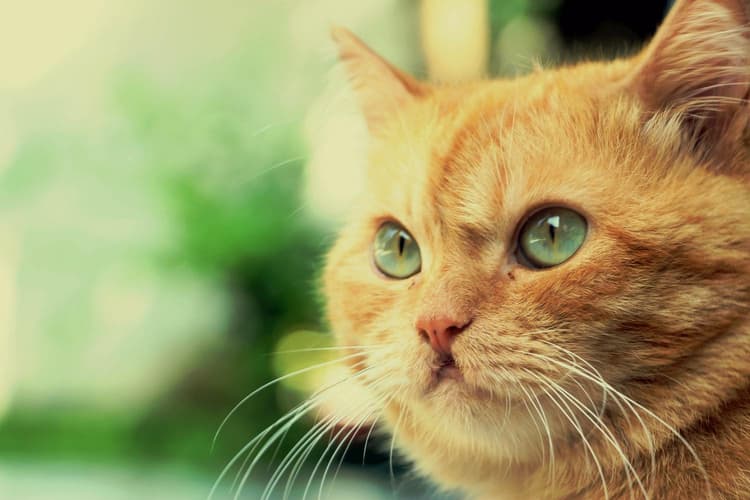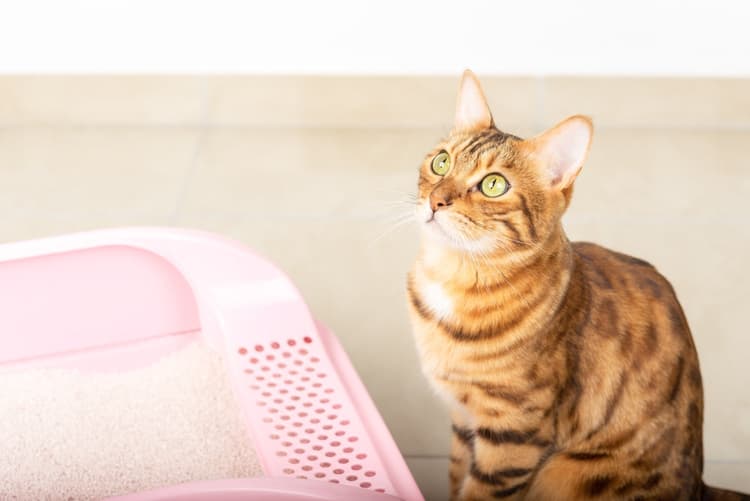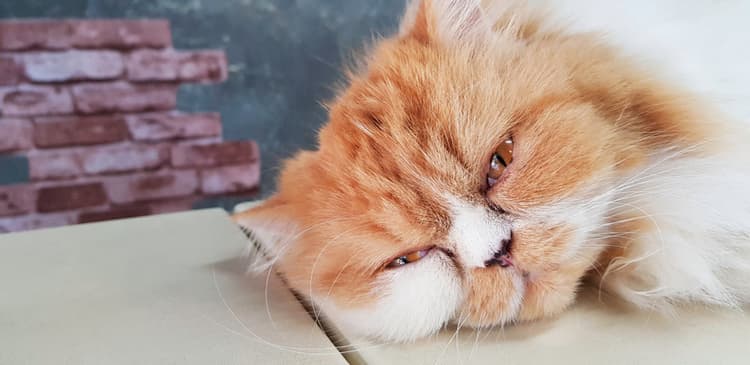Did you know that more than 50% of all American cats are obese or overweight? In a 2017 survey by Association for Pet Obesity Prevention (APOP), 56% of dogs and 60% of cats were classified as clinically overweight or obese by their veterinary healthcare professional. Read on to learn more about the prevention and treatment of feline obesity and keep your kitty healthy and happy for many years to come.
How can I know if my cat is clinically overweight?
Is your kitty 'just fluffy' or should it shed a few pounds? It can be tricky to determine an ideal body weight and recognize a clinically overweight cat. As described by Purina, a body condition score (BCS) system is typically used to assign cat's body types. BCS ranges from 1 to 9, 1 being very underweight and 9 being very overweight.
BSC of 4 and under is assigned to underweight cats (% body fat under 15). Underweight cats have visible ribs (if short-haired) which can be easily felt, the spine and hip bones are pronounced, the stomach appears tucked in and they have minimal fat covering across the body and stomach.
The value of the ideal BDS in cats is between 4 in 5 (% body fat 15-24). These cats have proportional bodies, the ribs can be felt, but are covered with a thin layer of fat and there is a small amount of fat on the stomach. The waist should be visible behind the ribs.
It is considered for a cat to be clinically overweight if the body condition score is between 6 and 7 (% body fat 25-34), and obese if it's between 8 and 9 (% body fat 35-45). Overweight cats have an excess fat covering over their ribs, their waist and stomach fat pad are notable and the waist isn't easily observed. There are usually heavy fat deposits present on the face and limbs.
To help you envision the ideal feline weight though, Royal Canine has created this Ideal Weight Animation Tool. Don't forget to consult with your veterinarian if you're worried about the weight of your special furriend though.

Health complications associated with feline obesity
Obesity is a serious health concern which can significantly reduce your cat's lifespan. Obesity was linked to increased risks from diabetes, heart disease, kidney disease, osteoarthritis, chronic infections and even some forms of cancer. Read more about the health risks related to obesity in this article.

Treatment
Most commonly, your cat's body weight can be successfully adjusted through some adaptations in terms of diet and lifestyle. Generally, the feline diet should be high in protein and low in carbohydrates. It is usually recommended to feed cats with cat food with a protein content of 45% or higher. Wet food is often higher in protein content too.
More importantly, the food you're giving your cat should be carefully dosed according to your cat's needs, age and health status. You can ask for help from your veterinarian in order to tailor your cat's diet according to its personal nutritional needs. And don't forget to watch out for those treats!
We know that you love to treat your lovely cat (and that they truly deserve it!), but if you're not careful the additional calories can quickly add up. Check out this useful chart by Royal Canin for more information on how much you're actually feeding your cat with treats!
While your vet can help you design an appropriate diet for your kitty, you can start stimulating them to exercise through 'playing' right away. You will have fun, you will bond and your kitty will maintain a healthy body weight – all at once! Here are our few tips to help you stimulate your kitty to move its butt.

Prevention
Obesity, just like a large number of disorders and diseases, is better prevented than treated. In order to prevent your cat from gaining too much weight, start watching its nutrition and activity as early as possible. Adapt the diet according to your cat's age, health status and nutritional needs immediately and stimulate your cat to move and exercise daily.
Consult with your veterinarian about the ideal weight for your cat and monitor the weight regularly. Do you know how to weigh your cat? Not all cats are quite as ready to jump on the scale as our friend Mystic The Bengal is, but weighing your cat doesn’t have to be hard.
Try setting the scale on the floor in an open area. Cats will often sit on objects with no other objects nearby. Try putting a box on the scale. Note the weight with the box and subtract this once your cat sits inside. If these tricks don’t work, just weigh yourself, pick up your cat and weigh yourselves together. The difference is your cat’s current weight.

Obesity is an important and complex problem commonly observed in domestic cats. While chubby cats are that much more adorable, obesity is often associated with a number of health problems which can decrease the quality and length of your cat's life. This is why it is important to learn as much as you can about your cat's nutrition, activity and health in order to keep them healthy and happy for as long as possible.
Do you have a few of your own tips to help other Basepaws readers get their cats to shed a few pounds? Leave us a comment on FB, IG or Twitter!

